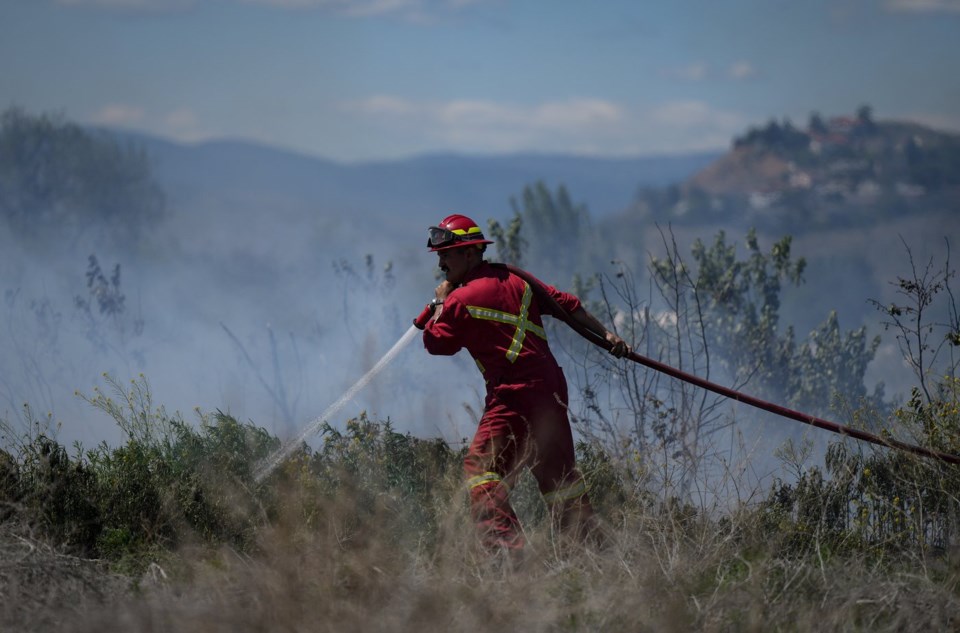BAYNES LAKE, B.C. — A wildfire has triggered a "tactical evacuation" in the community of Baynes Lake in southeast British Columbia.
The Regional District of East Kootenay says in a Facebook post that first responders are conducting the evacuation in the vicinity of Saunders and Palmer roads in the unincorporated community.
The district doesn't provide details of the fire, but the location matches a blaze that the BC Wildfire Service says is burning out of control nearby.
The service's dashboard says the blaze measures 4.1 hectares and is receiving a "full response," reserved for fires that pose a threat to safety, property or infrastructure.
It says the fire is believed to be human caused.
The fire is among about 220 active blazes burning in the province, and the service says more than 90 per cent of them were caused by lightning.
Environment Canada had issued air-quality advisories for several districts, but by Monday afternoon, the warnings had been lifted in all but one area in central B.C.
The smoky skies bulletin remains up for the next 24 to 48 hours for the Marilla area of B.C., bordered between Babine, Fraser, Anahim and Morice lakes.
The latest evacuation comes after the BC Wildfire Service said the fire situation is still active as above seasonal temperatures persist in the province.
The service said in its situational report posted Monday that much of B.C. remains "unseasonably dry" due to the ongoing drought, leaving fuels susceptible to ignition and fire behaviour that could increase quickly.
This report by The Canadian Press was first published Sept. 9, 2024.
The Canadian Press



